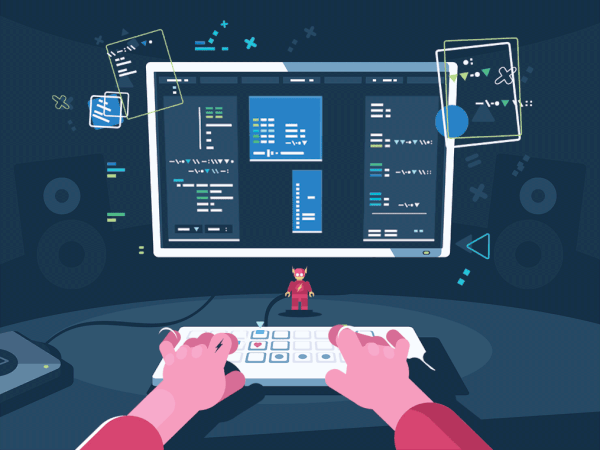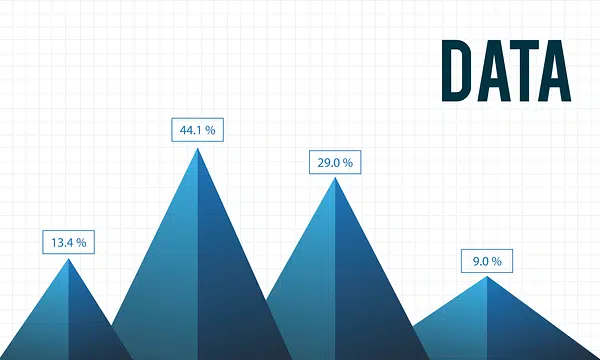In the dynamic world of software creation, developers are constantly seeking an edge—tools that can streamline workflows, enhance productivity, and reduce the friction of complex tasks. The modern developer’s arsenal is no longer limited to basic IDEs and compilers; it’s a rich ecosystem of specialized applications, frameworks, and extensions. These developer utility kits are evolving at an unprecedented pace, driven by the demands of diverse programming paradigms, cloud-native environments, and the omnipresent push for automation. This continuous evolution isn’t just about new features; it’s about fundamentally reshaping how code is written, debugged, tested, and deployed, truly marking a rapid advancement in the tools that power innovation.
The Crucial Role of Developer Tools: Beyond Basic Coding
To fully appreciate the swift evolution of developer utility kits, it’s essential to understand their pivotal role in the software development lifecycle (SDLC) – a role that extends far beyond just writing lines of code.
A. Addressing the Complexity of Modern Software
Today’s software is rarely simple. Applications are distributed, often running across multiple cloud services, integrating with numerous APIs, and handling vast amounts of data. This inherent complexity demands sophisticated tools.
- Distributed Systems Management: Building and troubleshooting microservices, serverless functions, and containerized applications requires specialized tools for inter-service communication, tracing, and monitoring. Traditional debuggers simply can’t cope with this level of distribution.
- Polyglot Environments: Projects often involve multiple programming languages, frameworks, and databases. Developers need tools that can seamlessly integrate with and support this polyglot landscape, allowing them to switch contexts efficiently.
- Data Proliferation: Managing, querying, and visualizing data from diverse sources (relational databases, NoSQL stores, data streams) requires powerful data manipulation and analysis tools.
- Security Integration: With cyber threats escalating, security can’t be an afterthought. Tools that integrate security scanning, vulnerability detection, and secret management into the development workflow are becoming non-negotiable.
B. Driving Developer Productivity and Efficiency
At its core, a developer’s toolkit is designed to amplify productivity, allowing more focus on problem-solving and less on repetitive, mundane tasks.
- Automating Repetitive Tasks: From code generation and boilerplate creation to dependency management and build processes, tools automate the tedious, error-prone aspects of development, freeing up mental bandwidth.
- Accelerating Debugging and Troubleshooting: Advanced debuggers, profilers, and logging aggregators enable developers to quickly identify and resolve issues, drastically reducing downtime and frustration.
- Enhancing Code Quality: Linters, static analysis tools, and code formatters ensure adherence to coding standards, reduce technical debt, and improve code readability, making collaboration easier.
- Streamlining Deployment Workflows: Tools integrated with CI/CD pipelines automate testing, packaging, and deployment, enabling faster, more frequent releases with higher confidence.
C. Fostering Collaboration and Teamwork
Software development is inherently a collaborative effort. Utility kits are increasingly designed to facilitate seamless teamwork.
- Version Control Integration: Deep integration with Git (or other VCS) for branching, merging, and pull requests is standard, enabling concurrent development without conflicts.
- Real-time Collaboration: Features within IDEs and code editors that allow multiple developers to work on the same codebase simultaneously, seeing changes in real-time.
- Knowledge Sharing: Tools that integrate with documentation platforms, wikis, and communication channels help disseminate information and maintain shared understanding across teams.
- Project Management Integration: Linking code changes directly to tasks and issues in project management tools (e.g., Jira, Trello) provides transparency and tracks progress effectively.
D. Adapting to Cloud and Open Source Ecosystems
The rise of cloud computing and the prevalence of open-source software have significantly shaped the evolution of developer tools.
- Cloud-Native Tooling: Cloud providers offer extensive SDKs, CLIs, and specialized tools for managing their services, integrating directly into developer workflows.
- Open Source Contributions: Many foundational developer utilities are open source, benefiting from community contributions, rapid iteration, and widespread adoption. This also encourages developers to contribute back.
- Ecosystem Expansion: The open-source nature fosters an environment where specialized tools emerge to solve niche problems, creating a rich and diverse ecosystem that developers can tap into.
Key Categories and Evolutionary Trends in Developer Utility Kits
The rapid evolution of developer utility kits manifests across several distinct categories, each seeing significant advancements and shifts in focus.
A. Integrated Development Environments (IDEs) and Code Editors
The central hub for most developers, IDEs and code editors are continuously enhancing their capabilities.
- Smarter Code Completion and AI Assistance: Beyond basic IntelliSense, modern IDEs use AI/ML (e.g., GitHub Copilot, Tabnine) for highly contextual code suggestions, boilerplate generation, and even entire function suggestions based on comments or surrounding code.
- Integrated Debugging for Distributed Systems: Debuggers now support remote debugging, attaching to containers, inspecting serverless function invocations, and tracing requests across multiple microservices.
- Polyglot Support: Enhanced language servers, syntax highlighting, and formatting tools for a wider array of programming languages and frameworks, often configurable via extensions.
- Cloud Integration: Direct integration with cloud provider SDKs, resource explorers, and deployment tools, allowing developers to manage cloud resources without leaving their IDE.
- Remote Development: Features that allow developers to work on code residing on remote servers, containers, or cloud instances, providing a powerful development experience from any local machine.
B. Command Line Interfaces (CLIs) and Shell Enhancements
Despite the rise of GUIs, the command line remains indispensable for automation and power users. CLIs are becoming more intelligent and user-friendly.
- Rich Output and Interactive Prompts: Modern CLIs offer better formatting, progress indicators, and interactive prompts that simplify complex commands.
- Cross-Platform Consistency: Tools are designed to work seamlessly across Windows, macOS, and Linux, often via package managers.
- Integration with Cloud Services: Cloud providers offer robust CLIs (e.g., AWS CLI, Azure CLI, gcloud CLI) for managing resources programmatically, crucial for scripting and automation.
- Enhanced Shells: Beyond basic shells, tools like PowerShell, Zsh with Oh My Zsh, and fish shell offer powerful auto-completion, history search, and plugin ecosystems that dramatically boost productivity.
C. Version Control and Collaboration Tools
Git remains dominant, but the tools built around it are becoming more sophisticated for collaborative workflows.
- Advanced GUI Clients: Desktop clients (e.g., GitKraken, SourceTree) offer powerful visualizations of Git history, merge conflict resolution, and staging, making complex Git operations more intuitive.
- Integrated Code Review Platforms: Platforms like GitHub, GitLab, and Bitbucket provide robust features for pull requests, inline commenting, code suggestions, and automated checks, centralizing the code review process.
- DevOps Platform Convergence: Version control is increasingly integrated into broader DevOps platforms that encompass CI/CD, project management, and security scanning, providing a unified development experience.
D. Testing and Quality Assurance Tools
The shift-left approach to quality means testing is integrated earlier and more thoroughly into the development cycle.
- Automated Unit and Integration Testing Frameworks: Language-specific frameworks (e.g., Jest for JavaScript, JUnit for Java, Pytest for Python) are foundational, with enhanced reporting and coverage analysis.
- End-to-End Testing and UI Automation: Tools like Cypress, Playwright, and Selenium automate browser interactions for comprehensive end-to-end testing of web applications.
- Performance and Load Testing Tools: (e.g., JMeter, Locust, K6) simulate high user loads to identify performance bottlenecks before production.
- Static Analysis and Linting: Tools (e.g., ESLint, SonarQube, Bandit) analyze code for potential errors, style violations, and security vulnerabilities without executing it, catching issues early.
- Chaos Engineering Tools: (e.g., Chaos Monkey, LitmusChaos) intentionally introduce failures into systems to test their resilience, moving beyond traditional testing.
E. Containerization and Orchestration Tools
Docker and Kubernetes have become central to modern deployment. Utility kits simplify their use.
- Docker Desktop and CLI: Essential for local container development, building images, and running containers.
- Kubernetes Command-Line Tools (kubectl): The primary interface for interacting with Kubernetes clusters, alongside tools like
minikubeorkindfor local Kubernetes development. - Service Mesh Tools: (e.g., Istio, Linkerd) provide a control plane for managing inter-service communication in complex microservices environments, enhancing observability, security, and traffic management.
- Container Registry Management: Tools for managing images in public or private container registries (e.g., Docker Hub, AWS ECR, Google Container Registry).
F. Monitoring, Logging, and Observability Tools
Understanding system behavior in production is critical, especially for distributed systems.
- Centralized Logging: Aggregating logs from all application components and infrastructure into a central system (e.g., ELK Stack, Splunk, Datadog) for analysis and troubleshooting.
- Metrics Dashboards: Tools for collecting, visualizing, and alerting on key performance indicators (KPIs) (e.g., Prometheus, Grafana, cloud-native monitoring services).
- Distributed Tracing: Tools (e.g., Jaeger, Zipkin, OpenTelemetry) that trace requests as they flow across multiple services, providing a holistic view of request latency and dependencies in distributed architectures.
- Application Performance Monitoring (APM): Integrated suites (e.g., New Relic, Dynatrace) that provide deep insights into application performance, code execution, and user experience.
G. Cloud-Specific Developer Tools and SDKs
Each major cloud provider offers a robust set of tools tightly integrated with their services.
- Software Development Kits (SDKs): Libraries for various programming languages to interact with cloud services programmatically.
- Cloud CLIs: Command-line interfaces for managing cloud resources (e.g., AWS CLI, Azure CLI, gcloud CLI).
- Cloud IDEs/Workspaces: Browser-based development environments hosted in the cloud (e.g., AWS Cloud9, Google Cloud Shell Editor) for rapid development without local setup.
- Specialized Cloud Services: Tools for managing specific cloud services like serverless function management consoles, database migration tools, or IoT device management platforms.
The Transformative Impact of Evolving Developer Utility Kits
The continuous evolution of these tools is having a profound and positive impact on the entire software development ecosystem, benefiting developers, teams, and organizations.
A. Boosting Developer Productivity and Happiness
By automating tedious tasks, providing intelligent assistance, and simplifying complex operations, these tools significantly increase developer productivity. This frees up developers to focus on creative problem-solving, innovative features, and meaningful work, directly contributing to higher job satisfaction and reduced burnout. Happy developers build better software.
B. Accelerating Time-to-Market
Streamlined workflows, faster debugging, automated testing, and simplified deployment pipelines all contribute to a dramatic acceleration in time-to-market. Organizations can iterate more rapidly, release new features more frequently, and respond to market demands with unprecedented agility. This responsiveness is a critical competitive advantage in today’s fast-paced digital economy.
C. Improving Software Quality and Reliability
Integrated testing, static analysis, continuous monitoring, and proactive error detection mechanisms baked into modern toolkits lead to higher software quality and reliability. Issues are caught earlier in the development cycle, defects are reduced, and systems become more resilient, leading to fewer production incidents and a better user experience.
D. Reducing Operational Overhead and Costs
Automating infrastructure provisioning (via IaC tools integrated into the workflow), simplifying deployments, and providing comprehensive observability reduce the manual effort required from operations teams. This leads to reduced operational overhead, optimizes resource utilization in cloud environments (e.g., efficient container orchestration), and ultimately translates into significant cost savings for the organization.
E. Democratizing Complex Technologies
Powerful utility kits often abstract away the underlying complexities of advanced technologies like Kubernetes, serverless computing, or machine learning. By providing intuitive interfaces, smart defaults, and guided workflows, they make these sophisticated technologies more accessible to a wider range of developers, effectively democratizing their adoption and accelerating innovation across the board.
F. Fostering a Robust DevOps Culture
The integration of development, testing, and operational tools within a cohesive toolkit is a key enabler of a robust DevOps culture. It promotes shared responsibility, breaks down traditional silos between Dev and Ops, and encourages a mindset of continuous improvement, automation, and collaboration throughout the entire software lifecycle.
G. Enhancing Security Posture
Modern developer tools are increasingly embedding security directly into the development workflow. From static application security testing (SAST) in IDEs to dependency vulnerability scanning in CI/CD pipelines and secrets management tools, they help developers write more secure code from the outset and manage security configurations more effectively, leading to an enhanced overall security posture.
Challenges and Future Directions in Developer Utility Kits
While the evolution is rapid and beneficial, it also presents challenges and points towards exciting future directions for developer utility kits.
A. Tool Sprawl and Integration Fatigue
The sheer number and variety of specialized tools available can lead to tool sprawl. Developers and teams often face fatigue from needing to learn and integrate numerous disparate tools, each with its own configurations and nuances. The challenge for the future is to create more unified, opinionated platforms or highly interoperable toolchains that reduce this cognitive load.
B. Balancing Abstraction with Control
As tools become more powerful and abstract away underlying complexities, there’s a constant tension between simplifying the developer experience and providing sufficient control for advanced use cases or troubleshooting. Future tools must strike this balance, offering easy-to-use interfaces while allowing expert users to dive deep when necessary.
C. The Rise of AI-Native Development
The integration of AI into developer tools (e.g., AI code generation, intelligent debugging assistants, automated test case generation) is still in its early stages but accelerating rapidly. The future will see more AI-native development environments where AI agents actively collaborate with developers, not just as assistants but as proactive contributors to the code, design, and deployment processes. This will require new ways of interacting with tools and defining developer roles.
D. Edge Computing and Distributed Development Environments
With the rise of edge computing, developers will need tools that can seamlessly deploy, manage, and debug applications running on highly distributed, resource-constrained edge devices, often with intermittent connectivity. This necessitates new approaches to local development, remote debugging, and real-time monitoring of edge workloads.
E. Low-Code/No-Code Platforms and Citizen Developers
While traditional developer tools cater to professional coders, the growth of low-code/no-code platforms empowers ‘citizen developers’ to build applications with minimal coding. Future utility kits will likely need to bridge this gap, offering features that cater to both professional developers (for complex custom logic) and citizen developers (for rapid prototyping and business logic orchestration), potentially leading to hybrid development environments.
F. Security as an Embedded Feature, Not an Add-on
Security will become even more deeply embedded into every layer of developer tools, moving beyond bolt-on scanners to proactive security by design. This includes automated threat modeling, real-time feedback on insecure coding patterns, intelligent vulnerability patching suggestions, and seamless integration with security operations centers (SOCs).
G. Sustainable Software Development Tools
As environmental concerns grow, developer tools will increasingly offer features to help build more sustainable software. This could involve tools that analyze code for energy efficiency, suggest optimizations to reduce carbon footprint, or help monitor the environmental impact of cloud resource consumption.
H. Collaborative Immersive Development Environments
Imagine developers working together in a shared 3D virtual space, interacting with code, diagrams, and live system metrics. Augmented Reality (AR) and Virtual Reality (VR) could offer new immersive development environments, allowing for richer collaboration and visualization of complex systems, moving beyond traditional 2D screens.
Conclusion
The rapid evolution of developer utility kits is a testament to the relentless pursuit of efficiency and innovation in software development. These tools are no longer mere conveniences; they are strategic assets that directly impact an organization’s ability to compete, innovate, and deliver high-quality software at speed. By automating the mundane, empowering intelligent assistance, and fostering seamless collaboration, they free developers to focus on the truly creative and challenging aspects of their craft.
While challenges like tool sprawl and the need to balance abstraction with control persist, the future of developer tools is incredibly exciting. The deepening integration of AI, the demands of distributed and edge computing, and the rise of new development paradigms promise a landscape where utility kits become even more intelligent, intuitive, and integral to the entire software lifecycle. For developers, embracing this evolution isn’t just about staying current; it’s about continuously enhancing their capabilities and shaping the very future of how we build the digital world.














